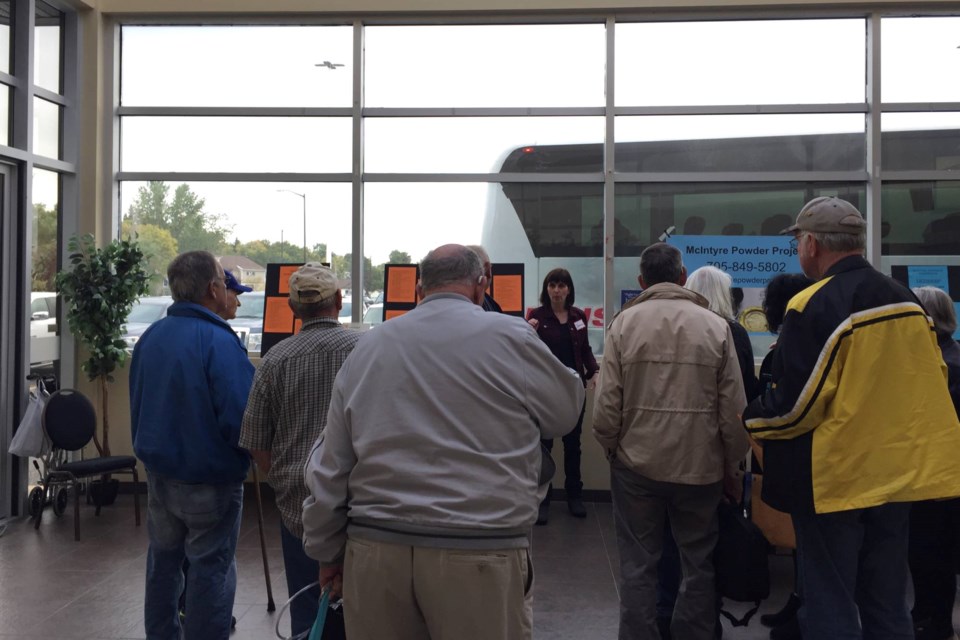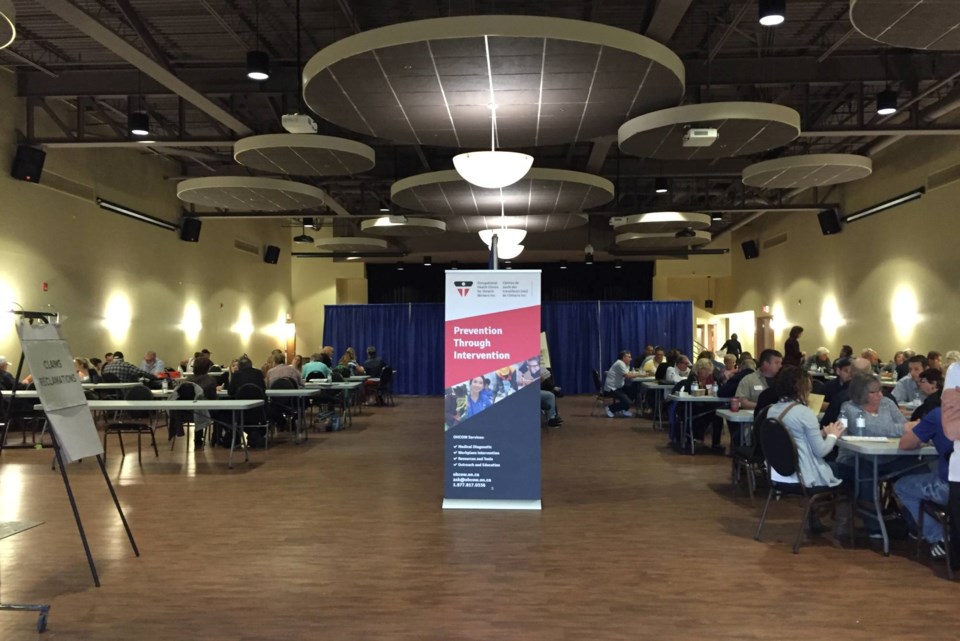Despite recent policy changes by Ontario’s Workplace Safety & Insurance Board (WSIB) that make it much easier for workers exposed to McIntyre Powder aluminum dust at gold and uranium mines between 1943-1979 to claim compensation for Parkinson’s disease, only a fraction of those eligible have been compensated. The issue has now shifted from bad, outdated policy and resulting legal hassles to getting the word out about a streamlined compensation process open to McIntyre Powder-exposed Parkinson’s sufferers and their families.
Compensation can include awards for lost wages, pain and suffering, reimbursement of non-OHIP-covered medical expenses, including long-term care or assistance with daily living activities while staying at home (including from family members), a stipend to cover other expenses such as yard work and household repairs and, where the condition is fatal, funeral expenses and death benefits. These benefits are available with full retroactivity, but without an application, the money stays in the WSIB’s multi-billion-dollar investment fund and never makes it to those who have suffered the human costs of this terrible disease. The employer-funded WSIB also keeps the money that would be refunded to OHIP for costs that it did cover for these work-related conditions.
The Occupational Health Clinics for Ontario Workers (OHCOW) offers free help in the form of ergonomic, occupational hygiene and medical assessments to workers whose health has been affected by workplace injuries or exposures to noise, repetitive motion, vibration or harmful substances. In partnership with the McIntyre Powder Project, founded by miner’s daughter Janice Hobbs Martell in 2015, we have been working to gather information on the health effects of McIntyre Powder and other mining exposures from affected workers and surviving family members and have helped many to gather the necessary information to file claims for Parkinson’s and other neurological conditions, cardiovascular disease, work-related cancers, silicosis and other lung diseases. McIntyre Powder-exposed and other mineworkers can contact us at 1-800-461-7120 to register for help.

In the case of Parkinson’s disease, past assistance has taken the form of gathering the information to help Ms. Martell convince the WSIB to revoke its policy stating that aluminum does not cause neurodegenerative disease and commission a high-quality study from the Occupational Cancer Research Centre (OCRC) which found elevated rates of Parkinson’s disease in McIntyre-exposed miners as compared with non-exposed miners, as well as elevated rates of Alzheimer’s disease and motor neuron disease (including ALS) among both exposed and non-exposed mineworkers as compared with the general public.
This led the WSIB to add Parkinson’s to the list of diseases that are presumed to be caused by a named work exposure “unless the contrary is shown.” Since the study found significantly increased rates of Parkinson’s even in miners with less than a year of McIntyre Powder exposure, that has so far meant that exposure followed by a confirmed diagnosis of Parkinson’s automatically leads to an allowed claim, at least as far as we are aware. And since the WSIB itself has possession of the Mining Master File maintained by the Ministry of Labour into the early 1990s, which contains the work histories of over 90,000 Ontario miners during the relevant period, all that really needs to be provided in an application for benefits is the worker’s basic identifying information. The WSIB should then track down their medical records. Or, OHCOW can help access the worker’s mining and medical records, provide information on which family members are entitled to file claims regarding deceased workers, and help submit a claim, free of charge.
If it’s so easy, how do we know that large numbers of valid claims are not even being made? And why not? The study that led to the recognition of Parkinson’s as an occupational disease began with the selection from the Mining Master File of groups of mineworkers with and without aluminum dust exposure who were still alive in 1993. Information on these workers was then sent to a research agency in Ottawa that searched their health since that date for diagnoses of Parkinson’s and other neurodegenerative diseases.
The study included roughly half of the approximately 27,500 mineworkers who are thought to have been exposed to McIntyre Powder. Out of that half, 284 workers with a diagnosis of Parkinson’s were identified. So, one would conservatively expect 500 or more valid claims to be out there somewhere. Yet fewer than 50 claims for McIntyre Powder-related Parkinson’s had been made (most filed by OHCOW) and 40 accepted by WSIB prior to the enactment of presumptive occupational disease status in January 2022. We have only been contacted by a handful more claimants since the announcement of that change, leading us to believe that news of the link to Parkinson’s disease has not spread much farther.
Unfortunately, it is not currently possible to notify potential claimants directly. Privacy and research concerns make that impossible. Even the researchers do not know the names of the 284 exposed mineworkers with confirmed Parkinson’s, while the health records matching agency does not know which Parkinson’s sufferers were exposed, let alone the contact information for the surviving family members of the many who have passed away. All OHCOW and concerned citizens can do is spread the word, in hopes that it will reach mineworkers and family members who may be eligible for compensation.
Who was exposed?
McIntyre Powder was finely ground aluminum dust that workers at almost all gold and uranium mines in Ontario were forced to inhale before every shift between the 1940s and 1979. The dust was blown into changing areas or other enclosed spaces, and workers were encouraged to breathe it in deeply to coat their lungs with a chemical film that would in theory intercept and neutralize the silica dust kicked up by the mining process, thus preventing the lung disease silicosis.
Although the idea was based on laboratory experiments and, so, not totally outlandish, the rush to move from test tubes and beakers into the lungs of human guinea pigs was at best a poorly designed and unethical experiment on approximately 27,500 mineworkers. In the end, the aluminum dust not only failed to protect against silicosis, but somewhat predictably had harmful effects of its own. This was foreshadowed as early as the 1950s in animal studies conducted in Germany, but the McIntyre Research Foundation, which produced and promoted use of the powder, not only ignored these findings, it sought to suppress them.
Use of McIntyre Powder screeched to a halt following the 1979 broadcast of a CBC Fifth Estate documentary which showcased medical experts from Canada, Sweden, South Africa and the UK expressing the view that the so-called treatment was more likely to be toxic than effective, and could harm workers’ lungs or have neurological effects. Just as damning were interviews with a mine manager who refused to demonstrate the powder’s use because he feared how it would look to members of the public as well as the unconvincing (and visibly perspiring) chief of the McIntyre Research Foundation.
It was only with the founding of the McIntyre Powder Project in 2015 that the issue was again brought to public attention. Over the past eight years, the WSIB has been moved to change course and recognize the effect of the aluminum dust in causing chronic obstructive pulmonary disease and Parkinson’s disease. Next up for consideration will be cardiovascular disease, as well as the link between mining exposures more generally and Alzheimer’s and motor neuron disease. OHCOW can be contacted at 1-800-461-7120 by any worker or family member who needs assistance.
Dave Wilken is Chief Operating Officer of the Occupational Health Clinics for Ontario Workers, a free service for workers, governed by a labour and community Board of Directors.



